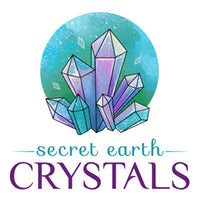BLUE QUARTZ
Specifications
Mineral Class: Quartz
Crystal System: Trigonal
Hardness: 7
Luster: Vitreous
Diaphaneity: Translucent to Opaque
Colors: Blue, White
Symbolizes: Creativity
Source: Worldwide (including Africa, England, Russia, and USA)


Blue Quartz is an opaque to translucent, blue variety of quartz, owing its color to inclusions, commonly of fibrous magnesio-riebeckite, crocidolite or of Tourmaline. Blue Quartz can range in color from gray to pale blue to a deeper blue. The blue coloration in quartz crystals is known to be caused by scattering of light during crystal formation. There has been extensive scientific experimentation dedicated to understanding the cause of the light-scattering effects and the most common explanation has been that the blue inclusions are due to Rayleigh scattering from extremely small mineral inclusions. This phenomenon is the same reason that the sky appears blue.
Quartz is a mineral composed of silicon and oxygen atoms in a crystalline structure called a tetrahedra. Quartz is the second most abundant mineral in the earth’s crust after feldspar. There are several different varieties of quartz, many are considered semi-precious gemstones. Varieties of Quartz have been the most commonly used minerals in the making of jewelry and carvings, particularly in Eurasia. A major mining location for high purity Quartz is the Spruce Pine Gem Mine in Spruce Pine, North Carolina. Quartz may also be found in Caldoveiro Peak, in Asturias, Spain. Quartz gets its name from the German word, “quarz” meaning hard. The ancient Greeks called it “krustallos” meaning icy cold, as many of the ancient philosophers believed it to be a supercooled ice. Due to its strong blue pigmentation, Blue Quartz represents imagination and inspiration.
